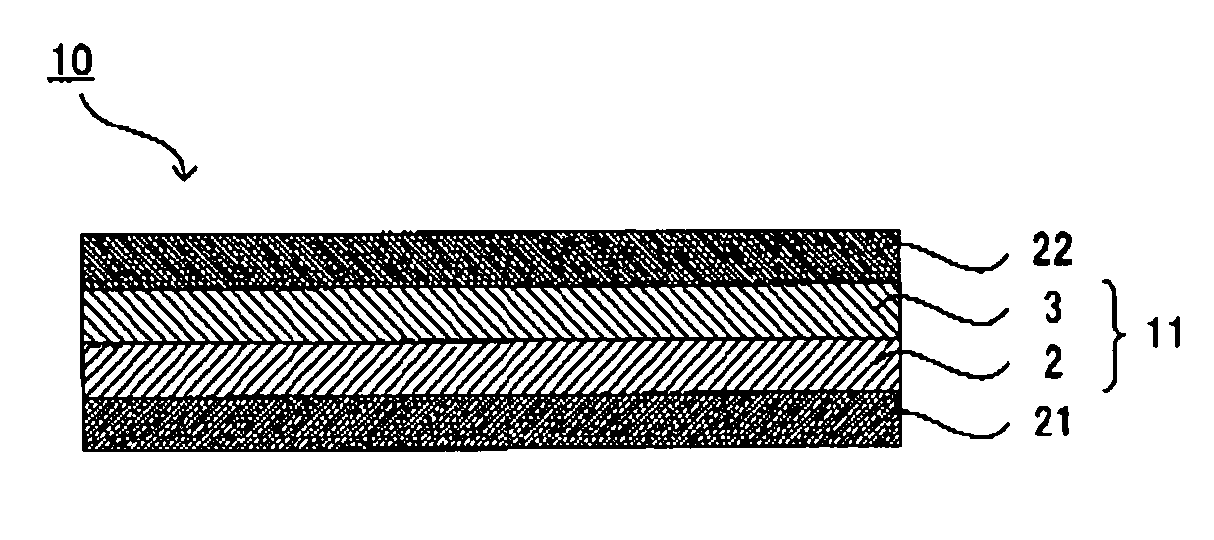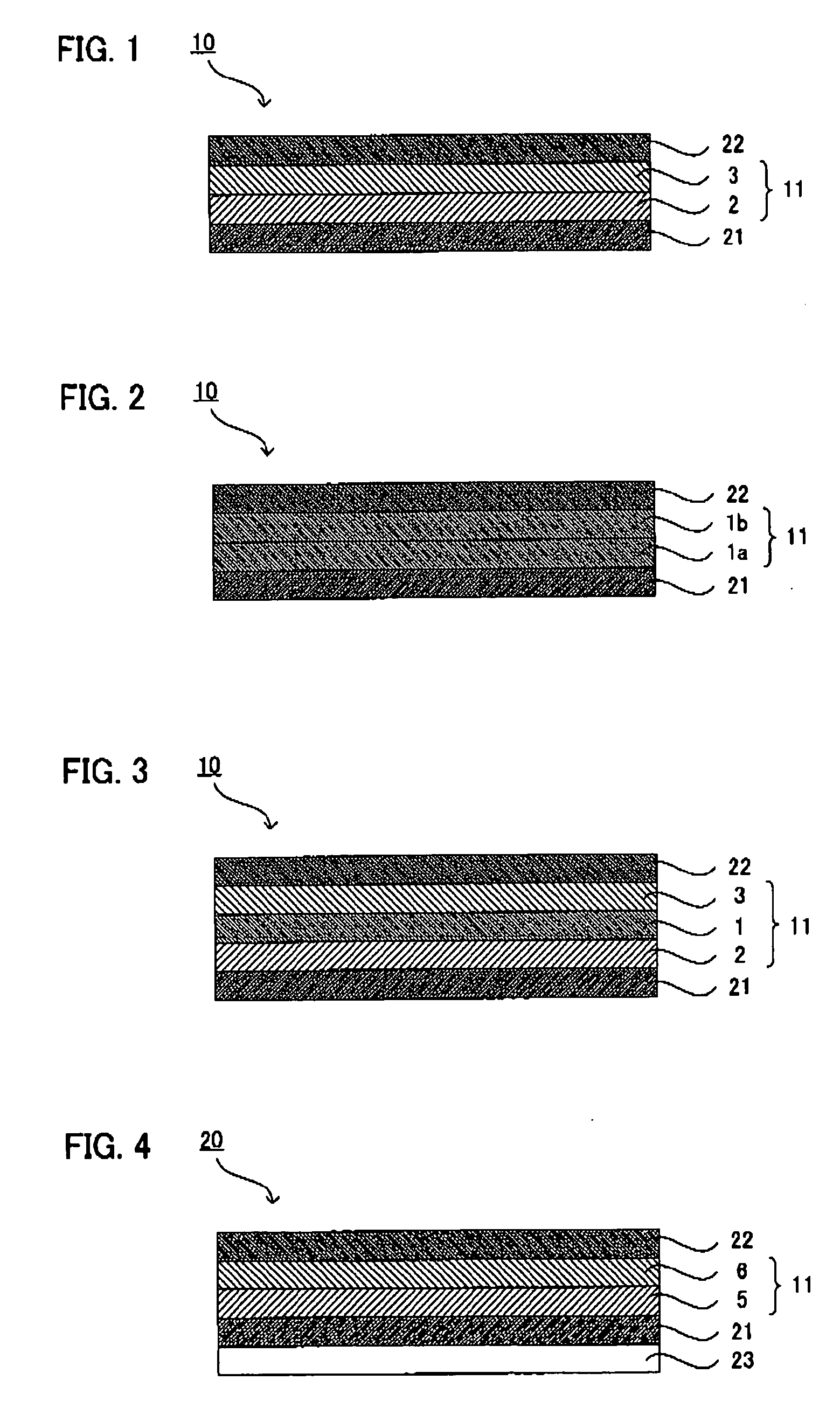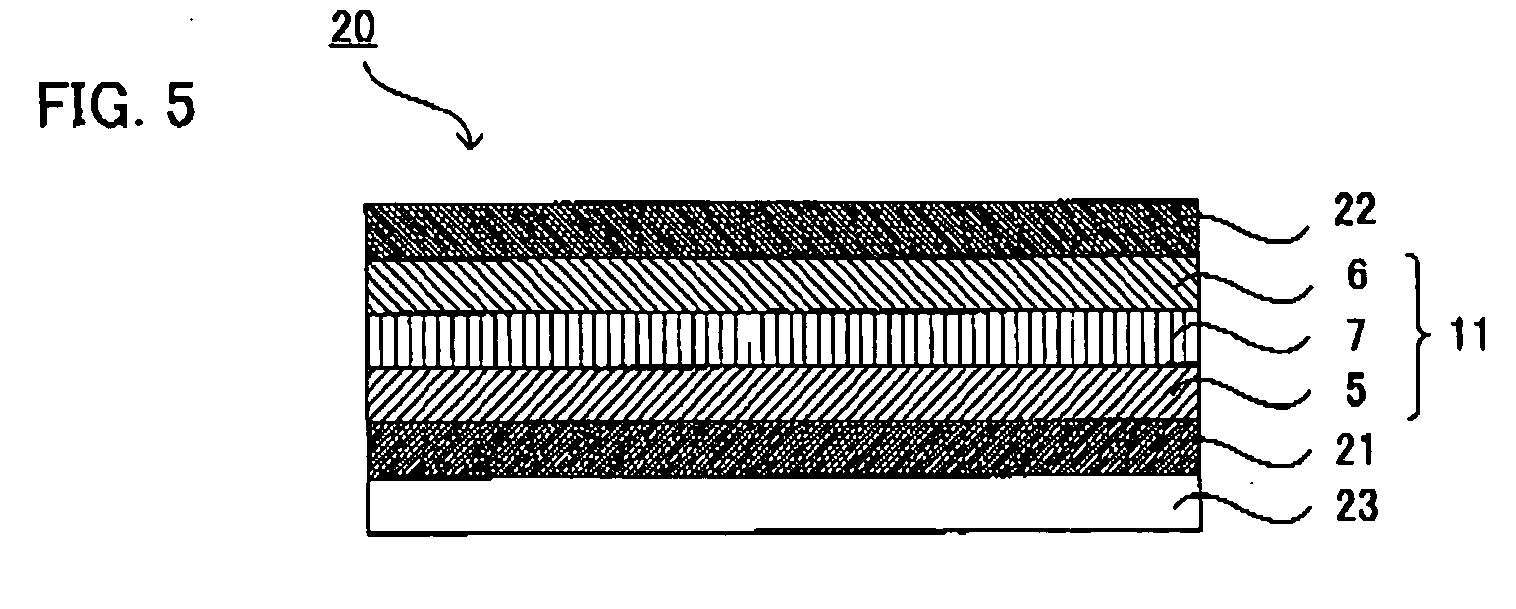Manufacturing method of laminated body, manufacturing organic device and organic thin-film solar cell using same, and organic device and organic thin-film solar cell
a manufacturing method and technology of organic materials, applied in the direction of sustainable manufacturing/processing, final product manufacturing, coatings, etc., can solve the problems of reducing the number of laminated organic layers, limiting the selection of constituent materials of each of the organic layers in the organic semiconductor layer, and evaporating the contents of the lower layer. , to achieve the effect of easy formation of films, low cost and high performan
- Summary
- Abstract
- Description
- Claims
- Application Information
AI Technical Summary
Benefits of technology
Problems solved by technology
Method used
Image
Examples
first embodiment
1. First Embodiment
[0036] The first embodiment of the laminated body manufacturing method of the invention comprises an underlying layer forming step of coating an underlying layer forming coating-solution comprising a polymer material having a weight-average molecular weight of 100,000 or more to form an underlying layer, and an upper layer forming step of coating an upper layer forming coating-solution on the underlying layer to form an upper layer.
[0037] In the present embodiment, the underlying layer comprises the polymer material, which has a weight-average molecular weight of 100,000 or more; therefore, when the upper layer forming coating-solution is coated on underlying layer in the upper layer forming step, the polymer material can be restrained from eluting out from the underlying layer.
[0038] The following will describe each of the steps in the laminated body manufacturing method of the present embodiment.
(1) Underlying Layer Forming Step
[0039] The underlying layer f...
second embodiment
2. Second Embodiment
[0088] The second embodiment of the laminated body manufacturing method of the invention comprises an underlying layer forming step of coating an underlying layer forming coating-solution comprising an insulating resin material to form an underlying layer, and an upper layer forming step of coating an upper layer forming coating-solution on the underlying layer to form an upper layer.
[0089] In the embodiment, the underlying layer comprises the insulating resin material, whereby the solvent resistance can be improved and the strength of the underlying layer to be obtained can be further improved.
[0090] The upper layer forming step, and other points of the laminated body manufacturing method are the same as those described in the first embodiment. Thus, description thereof is omitted herein. The underlying layer forming step will be described below.
(1) Underlying Layer Forming Step
[0091] The underlying layer forming step in the embodiment is a step of coating ...
example 1
(Formation of a First Electrode Layer)
[0230] A SiO2 thin film was formed on a surface of a polyethylene naphthalate (PEN) film substrate (thickness: 125 μm) by PVD. An ITO film (film thickness: 150 nm, and sheet resistance: 20 Ω / □), which was a transparent electrode, was formed on the upper surface of the SiO2 thin film by reactive ion plating method (power: 3.7 kW, film-forming pressure: 0.3 Pa, film-forming rate: 150 nm / minute, and substrate temperature: 20° C.) using a pressure gradient type plasma gun, and then etched to be patterned. Next, the substrate, in which the ITO pattern was formed, was washed by using acetone, a substrate washing liquid, and IPA separately.
(Formation of a Hole Taking-out Layer)
[0231] A hole taking-out layer forming coating-solution (dispersion of an electroconductive polymer paste, poly(3,4)-ethylenedioxythiophene in water) was coated onto the substrate wherein the ITO pattern was formed, and then dried at 150° C. for 30 minutes to form a hole tak...
PUM
| Property | Measurement | Unit |
|---|---|---|
| temperature | aaaaa | aaaaa |
| temperature | aaaaa | aaaaa |
| temperature | aaaaa | aaaaa |
Abstract
Description
Claims
Application Information
 Login to View More
Login to View More - R&D
- Intellectual Property
- Life Sciences
- Materials
- Tech Scout
- Unparalleled Data Quality
- Higher Quality Content
- 60% Fewer Hallucinations
Browse by: Latest US Patents, China's latest patents, Technical Efficacy Thesaurus, Application Domain, Technology Topic, Popular Technical Reports.
© 2025 PatSnap. All rights reserved.Legal|Privacy policy|Modern Slavery Act Transparency Statement|Sitemap|About US| Contact US: help@patsnap.com



